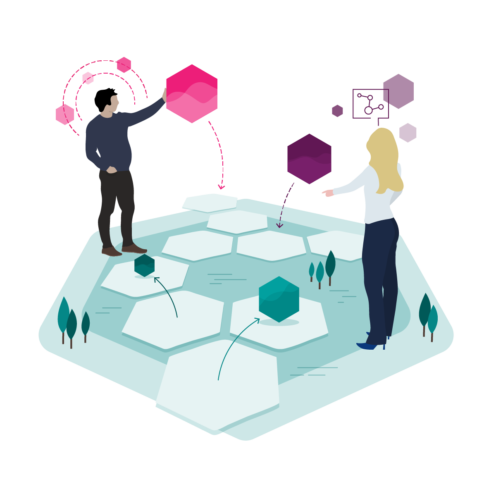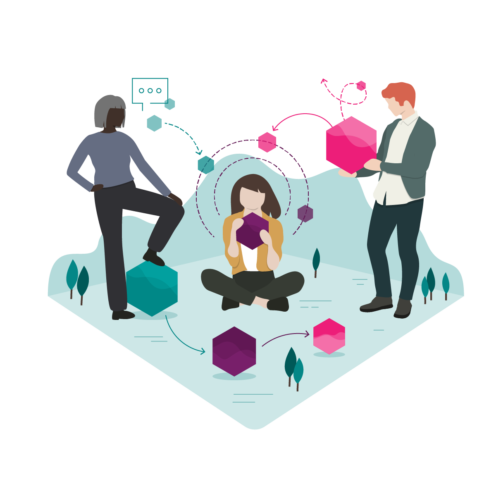Resilience was a hot topic long before the Covid-19 crisis hit us. And now, argues Birgit Baldauf, it’s more important than ever.
These times call for agility, acceptance and stamina – all aspects of resilience. Everyone faces numerous and different challenges – professionally and personally.
It’s the best time to take a closer look at how strengthening resilience can help us navigate this new reality. To examine what employers can do to guide their employees through these difficult times – and into the future – by establishing a resilience-building culture.
Generally speaking, resilience is the ability to endure, grow with, and recharge from emotional and mental burdens. The current situation exacerbates these burdens, triggering fears and feelings of insecurity, uncertainty, and vulnerability.
Job security has been blown away within months. Jobs that once seemed to be safe have been cut or have disappeared completely. In addition: nobody can give a reliable outlook of how this crisis – and thus the markets – will develop. We have to decide on assumptions and informed guesses.
The way we work and connect had to change immediately. For those working from home this means no more socialising over a coffee, no more presence culture that gave some leaders the confidence to “see” their people performing. Work has moved into our households, living next to our very personal situations. Whereas for some this might be a benefit to improve their work-life balance, others feel overwhelmed by this situation – and some work even harder than before.
People on furlough, on the other hand, try to keep track of what’s going on in the company, they might feel left behind, afraid to lose connections or forgotten. People see team members leaving the company which triggers different questions in their minds:
- How will it feel working in a team where half of my colleagues are gone?
- What if my job is next on the list?
- How do I cope with the guilty feelings, that I‘m still here – whilst others had to leave?
- Will I be competent enough and able to master changes to the nature of my job?
- How do I keep up team spirits as a leader, working virtually, with all these thoughts and fears my reports have?
Resilience will not deliver answers to all these questions – it cannot take away the pain. But it will equip people to better stand it.
What is resilience?
Resilience is a combination of traits and habits that include the following factors:
Optimism – Having a positive self-image and a positive world view
Creativity – The ability to handle spontaneous situations and to generate new ideas
Acceptance – Recognizing and accepting what is
Solution focus – Searching for possibilities instead of reasons for the problem; willingness to learn and develop
Awareness – Emotional awareness, including emotional stability, self-regulation and self-care
Self-responsibility – Having a creator mindset instead of a victim mindset
Socialising – The ability to build and maintain meaningful relationships and a solid network
Future orientation – Establishing values and purpose in life, creating a vision and goals
The benefits for individuals and employers seem obvious from the research[1]. Resilient people have been found to be less likely to become mentally or physically ill during adversity. They experience overall more hope, optimism and positivity and are better able to learn new skills and knowledge when their existing set becomes outdated. They are able to turn adversity into a growth experience and to leverage it into new experiences and ways of working and living. They also demonstrate greater willingness to engage in action.
If employers succeed in building up resilience in their workforce, they should get:
- More flexible and healthier employees
- A positive workplace atmosphere
- Higher commitment and loyalty
- A more agile culture
- Creative solutions
- Improved communication
- A supportive mindset
Plus: resilience will not only help employees to better master crises, it sets the foundation for The Career Innovation Company 7 Career Habits, that help them enhance their employability, achieve satisfaction at work and prepare for an uncertain future.
How can I help employees to better master their situation?
In three ways: build trust, provide orientation and confidence, and role-model. Your Communication Strategy can deliver on all three aspects.
Resilience-building Communication:
- Who is communicating what and when?
- Does your communication – or the sender of the message – role-model resilient behaviours?
- Do you only communicate facts or do you pick up and talk about emotions? Do you dare to show and communicate vulnerability and uncertainty? Communicating what you do not know (yet) is better than not communicating at all.
- Is your communication as transparent as possible – and are you sure it reaches all employees?
- Do you offer tools and resources that support virtual two-way communication – the opportunity for employees to give feedback or talk about their challenges or concerns? Bear in mind that only a few will feel comfortable bringing up topics or fears in a chatbox, virtual team meeting or e-mail. Make sure your leaders also offer virtual one-to-one video sessions.
- Do not only communicate messages but also create opportunities to network and exchange – just like meeting for a coffee in the virtual cafeteria.
- And finally: check your resources. Upskill and equip your employees with everything they need to perform easily now – and in the future. Include training and development opportunities that support self-reflection and coping with the new work reality – as well as technical training for jobs they may have to do in the future.
Remember: building resilience as an individual and company is a process. Start now to make your company and your employees ready to master future disruptions and changes.
Birgit Baldauf is passionate about enabling resilience and emotional competence in organisations. She draws on years of experience in the international hotel industry, most recently as Learning and Career Development Manager Europe, Marriott International.
Birgit was a provocateur at our recent Virtual Roundtable, where HR and talent leaders share contemporary issues and initiatives in work and careers. Request an invitation to benchmark, learn and share experiences.
Footnotes
[1] The Resiliency Advantage, Al Siebert Ph.D., 2005,
The role of positive emotions in positive psychology: The broaden-and-build theory of positive emotions. In: American Psychologist. 56, Barbara Fredrickson, 2001.
Resilience at Work: How to Succeed No Matter What Life Throws at You, Salvatore R. Maddi, Deborah M. Khoshaba, 2005.





